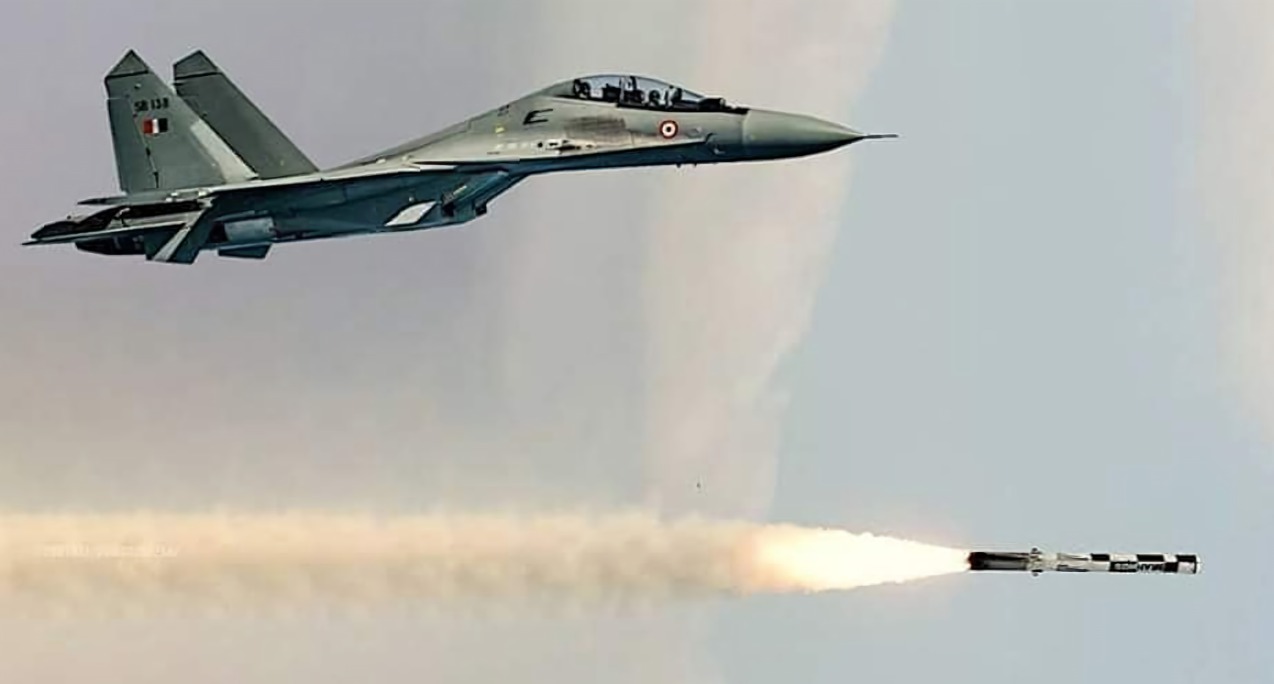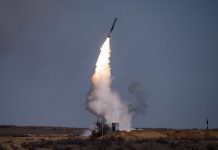Between July 14 and 16, 2025, India reportedly conducted a successful test of a hypersonic cruise missile capable of reaching Mach 8 under Project Vishnu. So far, there has been no official confirmation.
India’s defence ecosystem is currently undergoing a significant transformation, with Project Vishnu at the forefront. This classified initiative, led by the Defence Research and Development Organisation (DRDO), is a strategic leap for India.
Project Vishnu aims to develop the Extended Trajectory-Long Duration Hypersonic Cruise Missile (ET-LDHCM), a weapon system that will fundamentally enhance India’s strategic capabilities.
With its hypersonic speeds, advanced stealth characteristics, and multi-platform adaptability, Project Vishnu positions India among the leading nations in hypersonic technology, alongside the United States, China, and Russia.
Key Features: ET-LDHCM
Project Vishnu represents India’s ambitious effort to create an indigenous hypersonic missile. It combines cutting-edge materials science, advanced propulsion systems, and precision-guided technology.
While details are classified, available information suggests this missile is designed to fly at speeds between Mach 8 and Mach 10—almost three times faster than India’s fastest operational missile, the Brahmos, which reaches Mach 3.
With a range of 1,500 km, extendable to 2,500 km for a surface-to-surface configuration, the missile would have the capacity to penetrate deeply into adversary territory, targeting essential assets such as radar systems, command centres, and naval vessels.
Its adaptable nature, with launching capabilities from land, aerial, or maritime platforms, would constitute a significant advantage, ensuring operational versatility across various scenarios and enhancing India’s strategic reach.
The core of the ET-LDHCM is its indigenous scramjet engine, a key technological breakthrough. This engine utilises atmospheric oxygen for combustion, thereby markedly improving fuel efficiency and facilitating sustained hypersonic flight.
The propulsion system enables the missile to sustain speeds that surpass conventional air defences while covering extensive distances, making it a formidable weapon in India’s arsenal.
The missile’s airframe would be assembled with heat-resistant materials capable of enduring temperatures up to 2,000°C, generated by the intense friction associated with hypersonic travel. Furthermore, it would incorporate oxidation-resistant coatings to ensure durability in challenging environments, such as exposure to seawater or prolonged sunlight, making it suitable for naval deployment.
The ET-LDHCM is not just about speed and range; it also boasts formidable stealth capabilities. Operating at low altitudes, it significantly reduces radar detectability. Its mid-flight manoeuvres further enhance its capacity to evade missile defence systems.
The plasma stealth effect, a result of ionised air at hypersonic velocities, absorbs radio waves, thereby further reducing its radar cross-section. This comprehensive stealth package ensures the ET-LDHCM’s ability to execute rapid, deep-penetration strikes with precision and confidence.
The missile would be capable of carrying payloads ranging from 1,000 to 2,000 kg, which may include conventional or nuclear warheads, thereby providing strategic flexibility for both tactical applications and deterrent purposes.
Project Vishnu
Named after the Hindu deity symbolising preservation and power, Project Vishnu reflects India’s aspiration to develop hypersonic missile systems capable of delivering rapid, precise, and virtually unstoppable strikes.
The project is a natural evolution from India’s prior successes in missile technology, including the BrahMos (Mach 3), Shaurya missile, and the Hypersonic Technology Demonstrator Vehicle (HSTDV). However, Vishnu represents a quantum leap, not just an iteration.

The HSTDV, successfully tested in recent years, demonstrated India’s ability to sustain hypersonic speeds (above Mach 5) using an indigenous scramjet engine.
A 1,000-second ground test of the scramjet engine marked a significant milestone, paving the way for the ET-LDHCM’s development. Unlike traditional ballistic missiles, hypersonic cruise missiles like the ET-LDHCM combine extreme speed with low-altitude flight and mid-course manoeuvrability, making them nearly impossible to intercept with current air defence systems.
Looking ahead, the successful test of the ET-LDHCM in 2025 will be a critical milestone. Operationalising the missile and its variants will require sustained investment, rigorous testing, and integration with existing platforms.
The DRDO’s collaboration with industry and academia will be pivotal in overcoming technical challenges, such as scaling production and ensuring reliability under diverse operational conditions.
Implications & Impact
Project Vishnu positions India among a select group of nations possessing operational hypersonic capabilities. The United States, China, and Russia have dedicated substantial resources to similar technological advancements, with differing levels of success.
India’s indigenous methodology, however, distinguishes it by minimising dependence on foreign technology and enhancing its strategic autonomy.
The Project represents a strategic initiative in direct response to the evolving security challenges within India’s neighbouring region. The progress made by China in hypersonic weaponry, including the DF-21D and DF-26 missiles, has heightened regional concerns regarding power asymmetries.
Likewise, Pakistan’s missile development programs require the establishment of robust counter-capabilities. The ET-LDHCM’s capacity to execute rapid, deep-penetration strikes significantly enhances India’s deterrence posture, allowing for the neutralisation of threats with precision and expedience.
Beyond its military significance, Project Vishnu has far-reaching implications for India’s aerospace and civilian sectors. The advancements in hypersonic propulsion, materials science, and guidance systems could enhance satellite launch capabilities, reducing costs and increasing access to space.
Economically, the project stimulates India’s defence-industrial ecosystem. Involving private firms and MSMEs creates opportunities for innovation, skill development, and export potential.

Conclusion
Project Vishnu signifies a significant advancement in India’s defence capabilities, reflecting the nation’s ambitions to establish itself as a prominent global technological and military power.
The ET-LDHCM, distinguished by its exceptional speed, stealth, and adaptability, enhances India’s strategic deterrence and alters regional security dynamics.
Through the utilisation of indigenous innovation and the promotion of public-private partnerships, the project not only fortifies national security but also promotes progress in the aerospace and civilian sectors.
As India prepares for the 2025 testing phase, Project Vishnu exemplifies the country’s commitment to safeguarding its interests and asserting its presence on the international stage.
- Air Marshal Anil Khosla is a former Vice Chief of Air Staff (VCAS) of the Indian Air Force and AOC in C of Eastern Air Command.
- He tweets at: @AnilKhosla16




